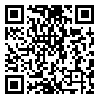BibTeX | RIS | EndNote | Medlars | ProCite | Reference Manager | RefWorks
Send citation to:
URL: http://sjsph.tums.ac.ir/article-1-5360-en.html
2- Ph.D. Associate Professor, Department of Medical Mycoparasitology, School of Medicine, Isfahan University of Medical Sciences, Isfahan, Iran
3- Ph.D. Assistant Professor, Pharmaceutical Sciences Research Center, Isfahan University of Medical Sciences, Isfahan, Iran ,
4- Ph.D. Professor, Department of Medical Parasitology and Mycology, School of Public Health, Tehran University of Medical Sciences, Tehran, Iran
Background and Aim: Medicinal plants provide an excellent source of drugs and new drug combinations, including the basis for the development of drug resistance to common anti-malarial treatments. In this study we investigated and compared the effect of an alcoholic extract of saffron and its constituents with that of chloroquine on malaria in mice.
Materials and Methods: A total of 65 male mice similar as regards gender, weight and age were randomly divided into 13 groups of 5 each. Eleven of the groups were infected with Plasmodium berghei and treated with saffron extract and its constituents and chloroquine based on the proposed method of Ryley and Petrs. Upon detecting the parasite in peripheral blood of the infected mice, they were treated with an aqueous, alcoholic or ethyl acetate solution at a dose of 350, 700 or 1050 mg/kg body weight (BW), chloroquine at a dose of 20mg/kg BW, and an iron chelator (50mg/kg BW). The solutions with the most effective concentrations were determined. Oral treatment at every stage lasted for up to 4 days. Parasite reduction in the groups treated with the extract was determined on days 4 and 7 and compared with that in the control, placebo and chloroquine groups. The Group 13 mice had no parasite injection and received no drug and were kept in the animal house only to control accidental death.
Results: Data analysis (t-test; SPSS) showed the most effective concentrations to be 700mg/kg ethyl acetate solution and 350 and 700mg/kg saffron extract, causing a significant reduction of parasitemia in the infected mice on day 7 (p<0.05).
Conclusion: The findings of this study indicate the potential effect of the alcoholic extract of saffron on Plasmodium berghei and, therefore, should receive proper attention.
Received: 2016/07/5 | Accepted: 2016/07/5 | Published: 2016/07/5
| Rights and permissions | |
 |
This work is licensed under a Creative Commons Attribution-NonCommercial 4.0 International License. |





